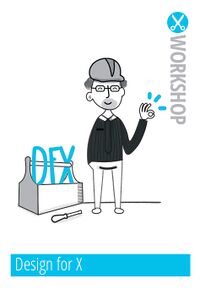Design for X: verschil tussen versies
Naar navigatie springen
Naar zoeken springen
(Nieuwe pagina aangemaakt met '=Why= This broad range of design tools helps you detail your concept in order to achieve an excellent (X) design. DfX allows you to execute activities concurrentl...') |
|||
| Regel 1: | Regel 1: | ||
| + | [[Bestand:Workshop_DesignX.jpg|200px|thumb|right|]] | ||
=Why= | =Why= | ||
Huidige versie van 16 dec 2019 om 08:43
Inhoud
Why
This broad range of design tools helps you detail your concept in order to achieve an excellent (X) design. DfX allows you to execute activities concurrently in order to increase productivity and quality.
How
Find an appropriate DfX tool; apply its guidelines. Make frequent checks whether your design is still on track towards excellence. Examples are: Design for Manufacturability, Design for Assembly, Design for Use, Design for Environment, Design for Six-Sigma, and Failure Mode and Effect Analysis.
Ingredients
- A clear goal of what you would like to achieve, for example improved product use.
- A focus on a phase in the product life cycle, for example manufacturing of parts.
- An attribute of the product, such as cost and environment.
- An appropriate DfX-tool.
Practice
Companies and engineers use DfX-tools to achieve an excellent product and process design; that’s why it’s called Design for Excellence. Six Sigma is typically used for process improvement while FMEA is often used for product improvement.
